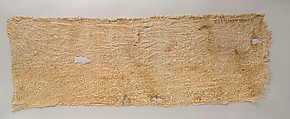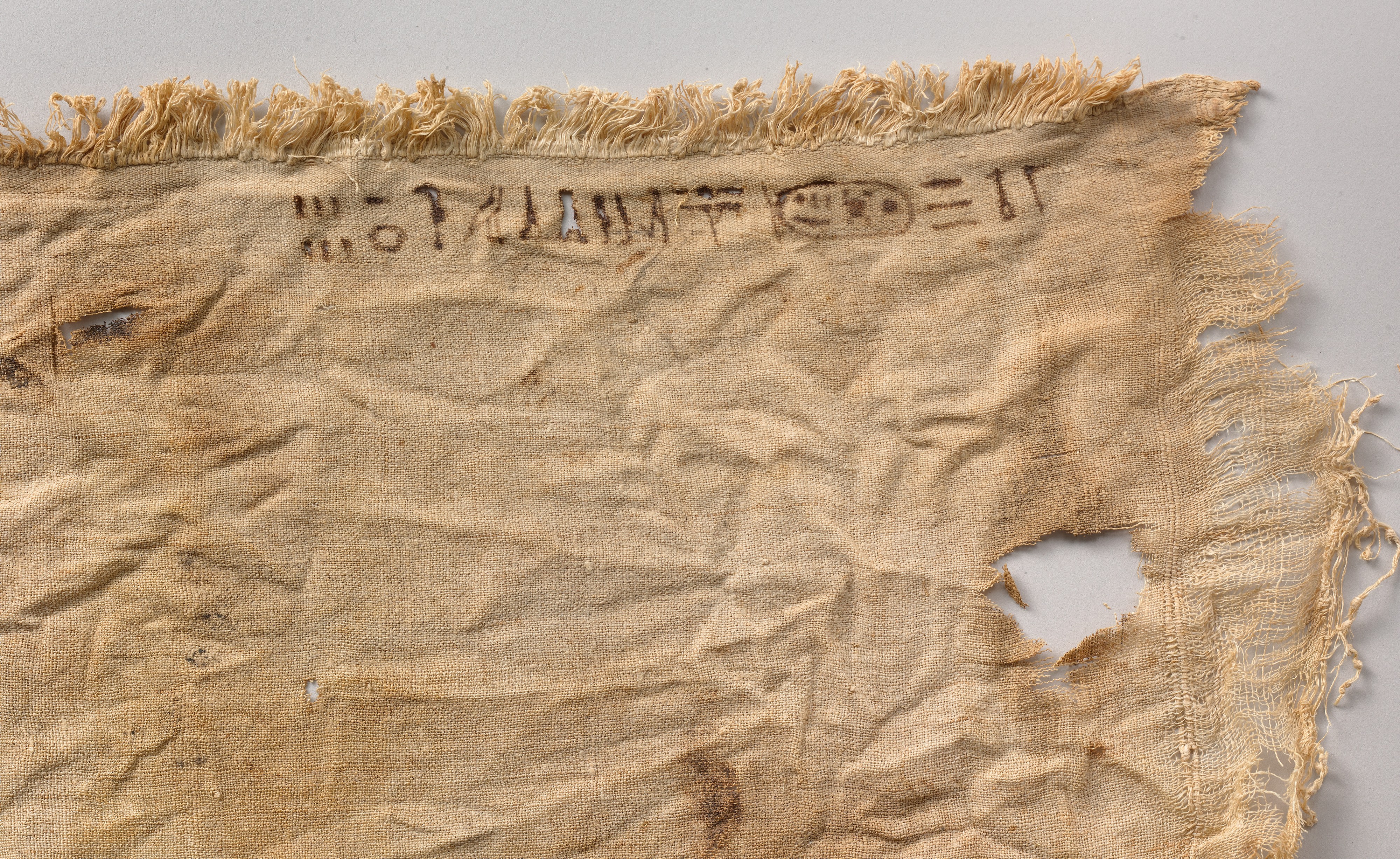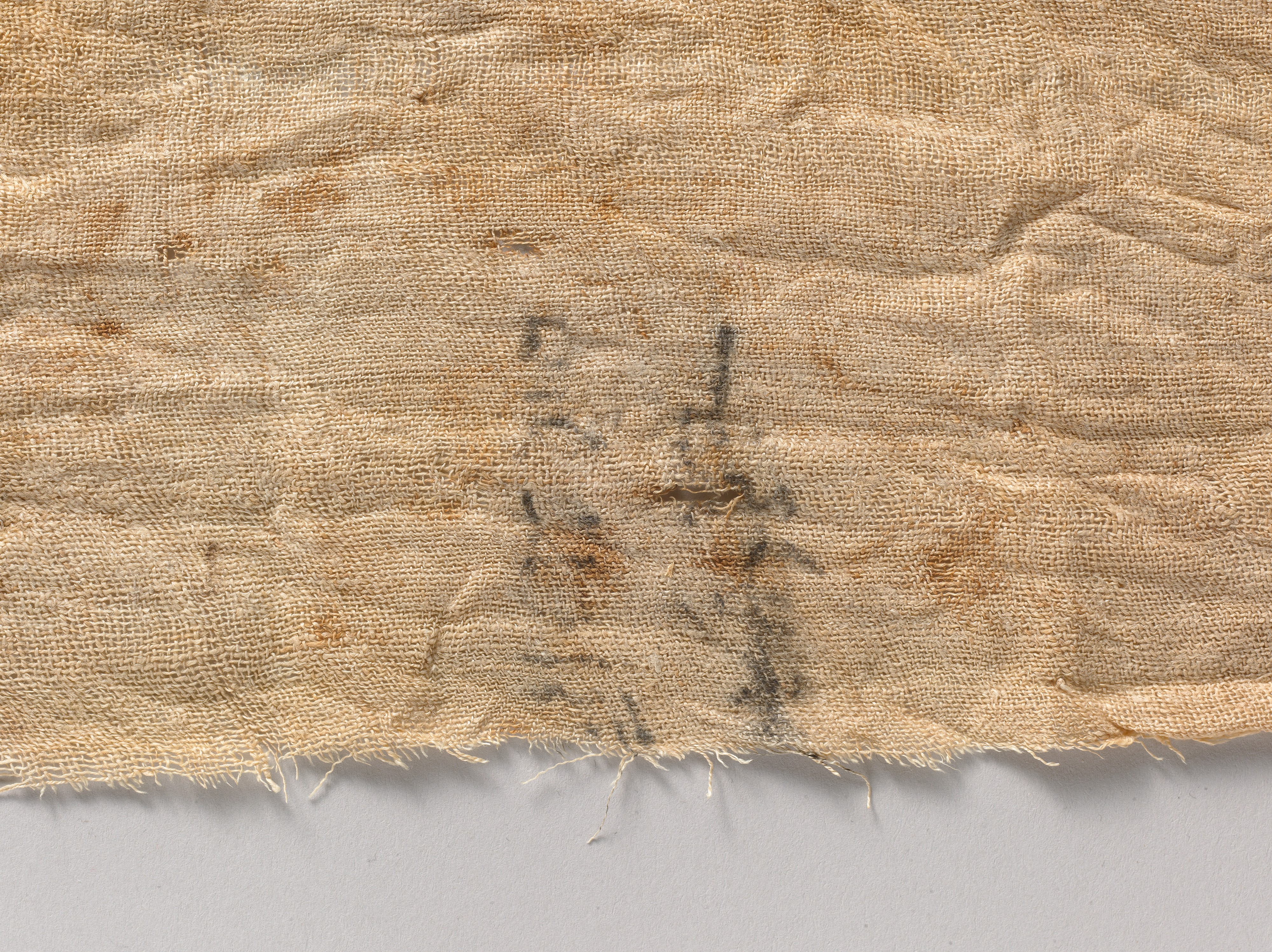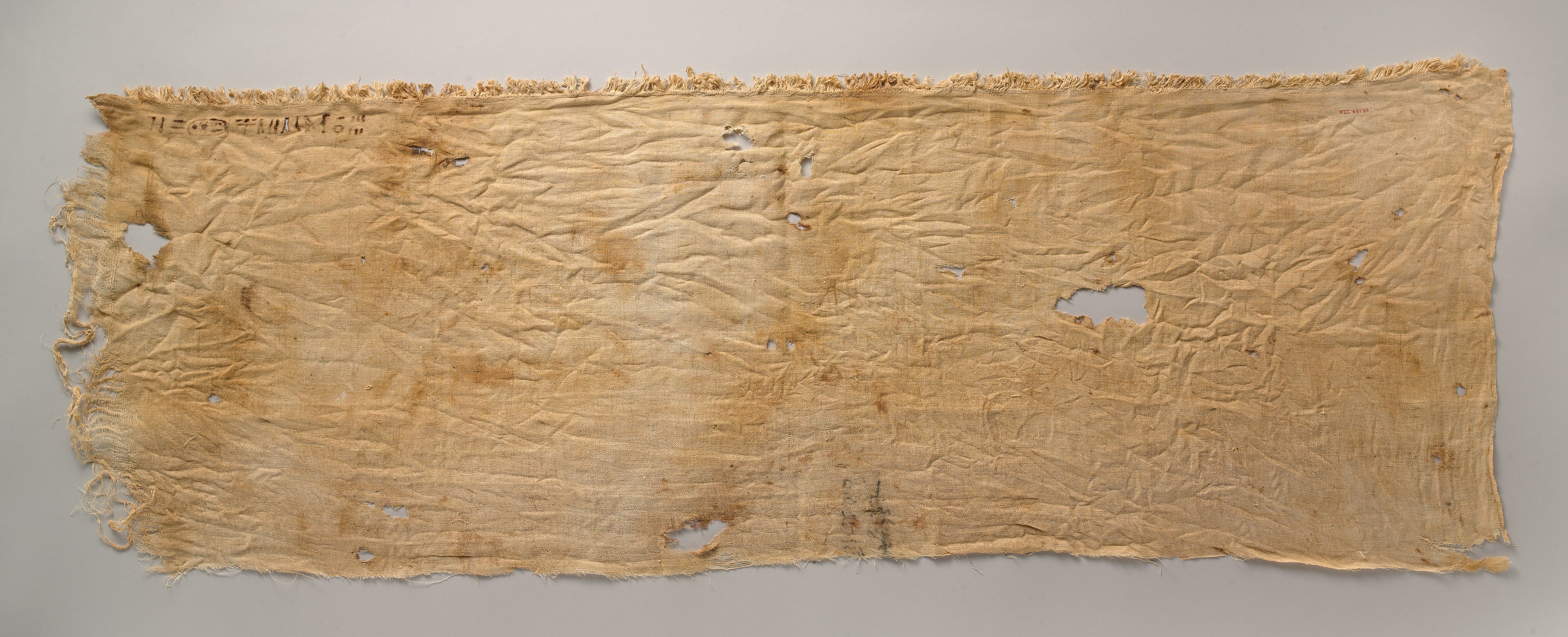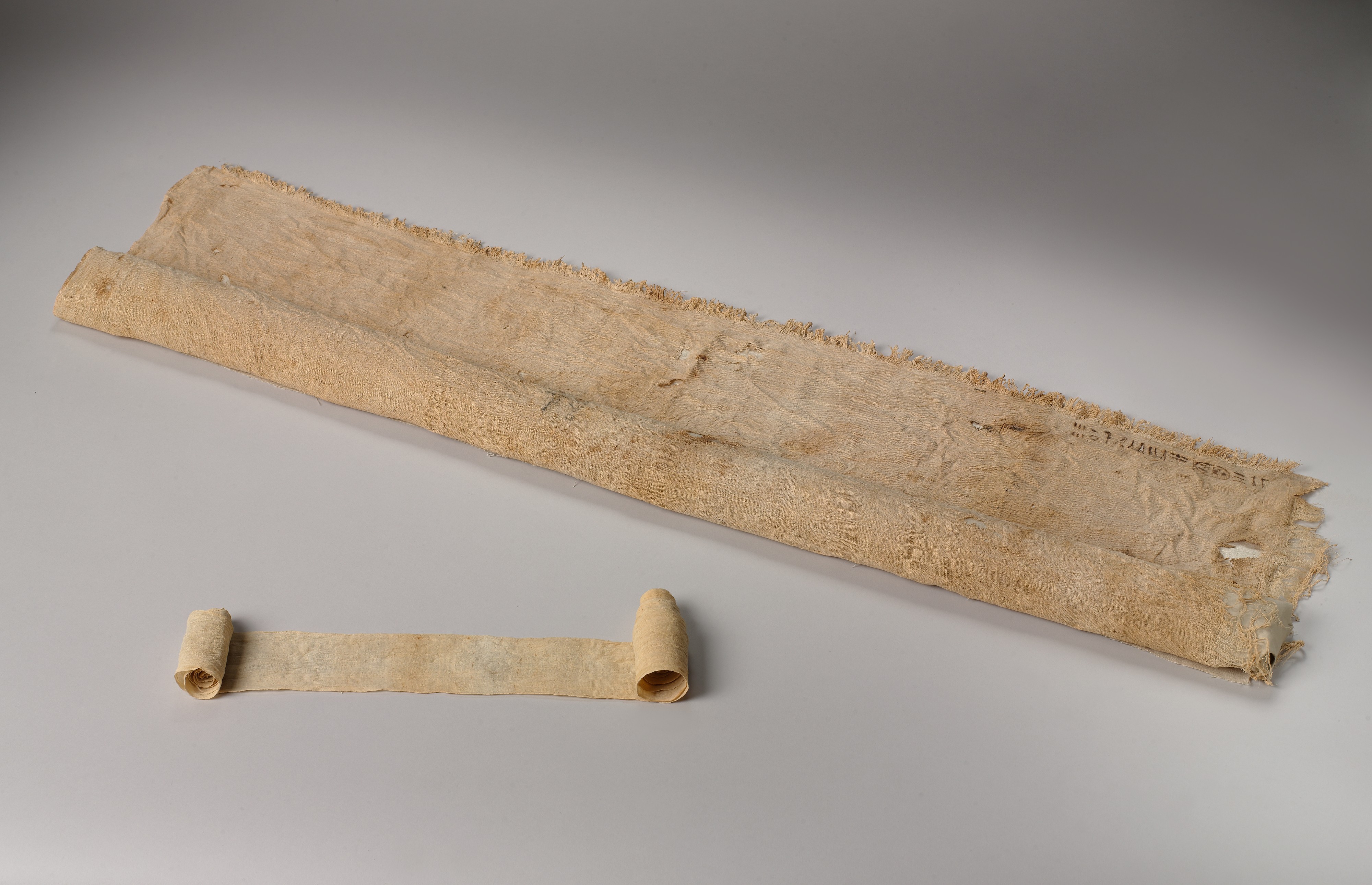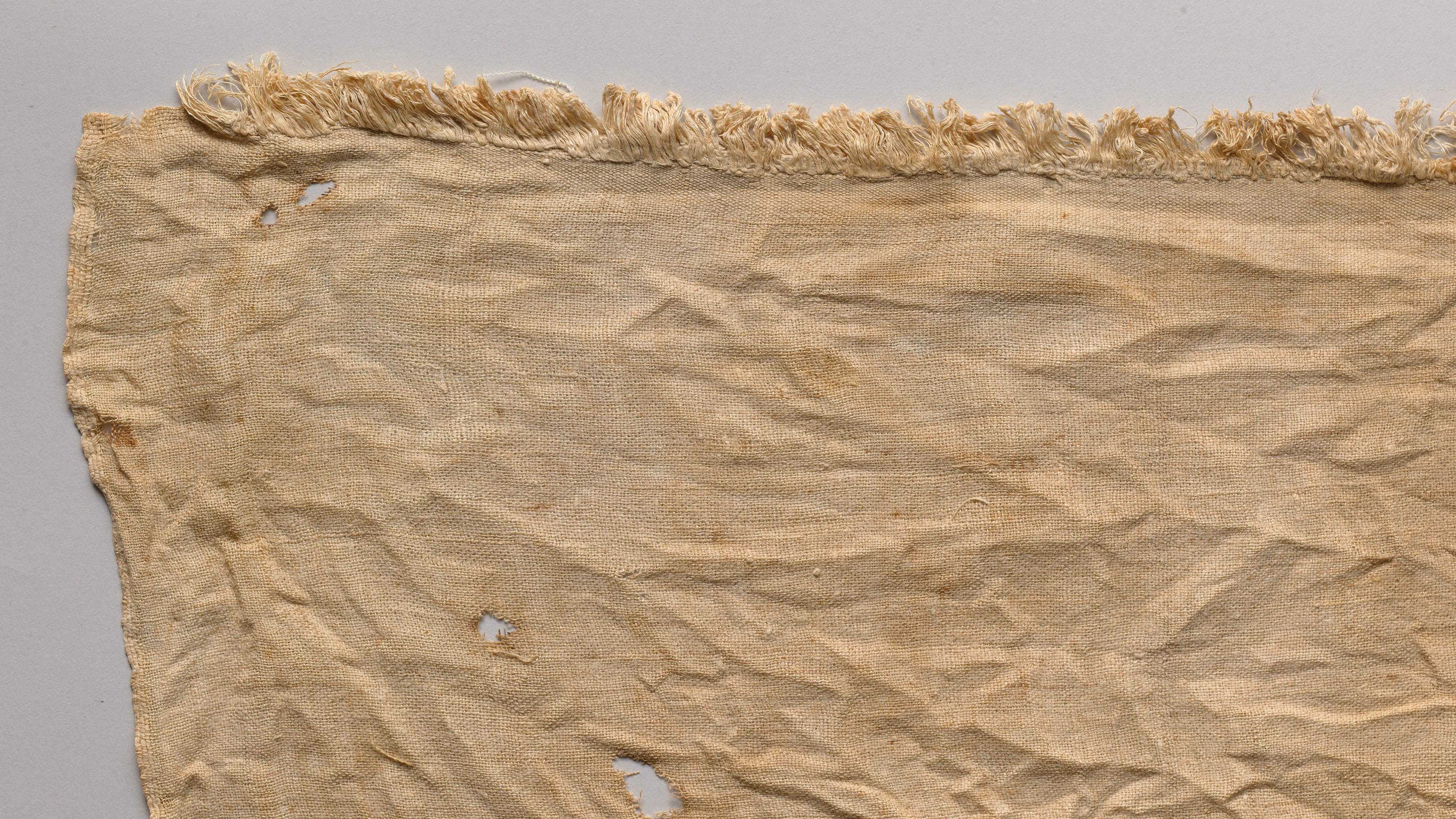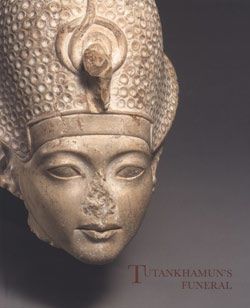Linen from Tutankhamun's Embalming Cache
New Kingdom
In December 1907 Theodore M. Davis, a wealthy American who was funding excavations in the Valley of the Kings, discovered a small pit near the tomb of Seti I. Inside the pit were approximately a dozen large sealed whitewashed storage jars (09.184.1). Among other things, the jars contained bags of natron (a kind of salt), pieces of linen with hieratic inscriptions dated to Years 6 and 8 of a king named Tutankhamun (throne name Nebkheperure). At the time, almost nothing was know about Tutankhamun, and Davis declared that he had discovered the king's tomb.
Davis received a number of the jars and their contents in the division of finds and, in 1909, he gave most of his share to the Metropolitan Museum. It was only later that Herbert Winlock, the field director of the Museum's excavations at Thebes, realized that the natron and linen were embalming refuse from the mummification of Tutankhamun.
This piece of linen cloth is inscribed in two places. In the upper right corner, the inscription reads: The Good God, Lord of the Two Lands, Nebkheperure, Beloved of Min, linen of year 6. The second inscription, at the center bottom of the sheet, is two lines of hieratic (a cursive form of Egyptian writing) and has, thus far, proven illegible.
Due to rights restrictions, this image cannot be enlarged, viewed at full screen, or downloaded.
This artwork is meant to be viewed from right to left. Scroll left to view more.
